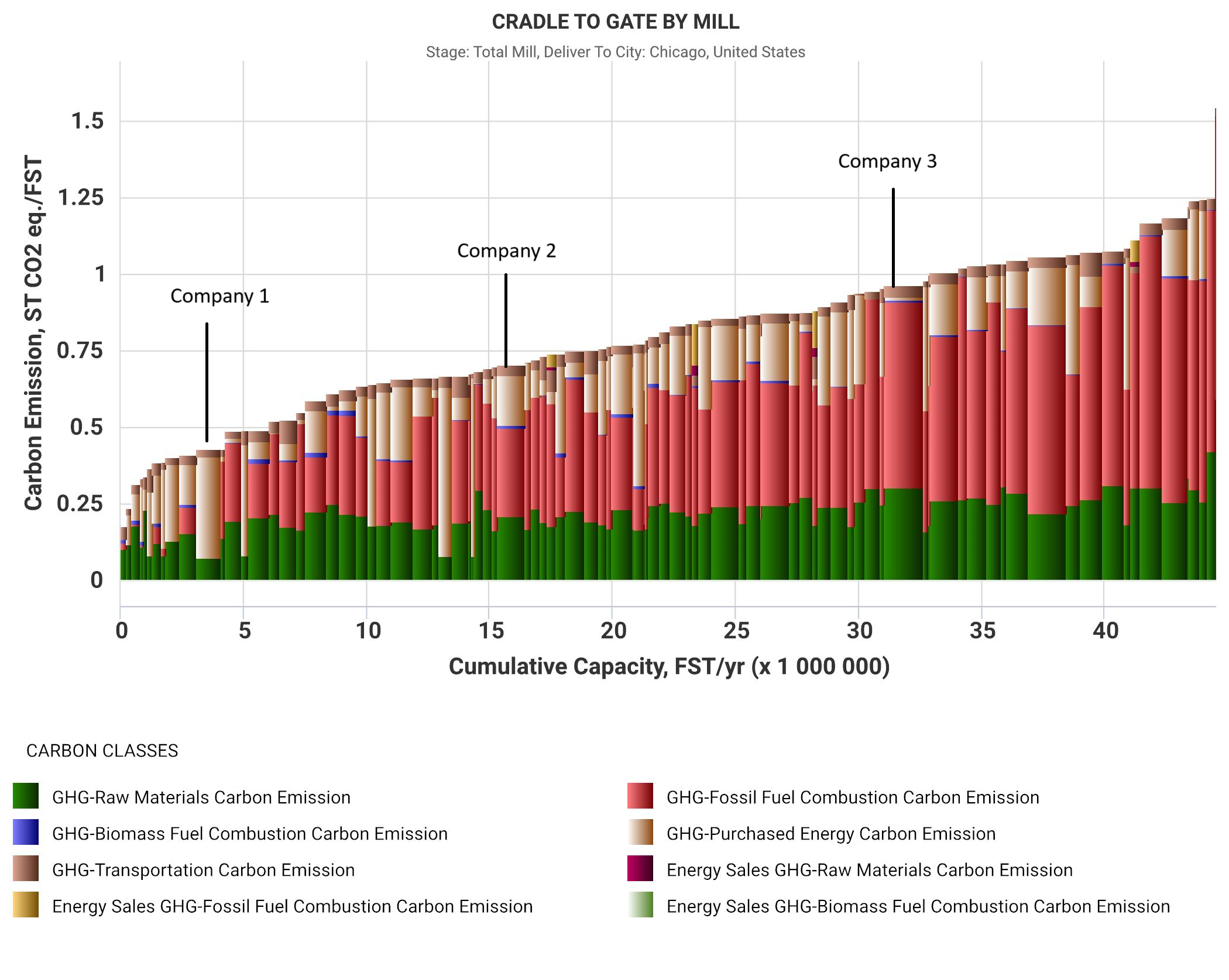5 min read
Navigating the Future of the Pulp and Paper Industry: Sustainability and Carbon
 Trip Jobe
:
Jan 10, 2025 12:00:00 AM
Trip Jobe
:
Jan 10, 2025 12:00:00 AM

A few weeks back, we discussed key trends shaping the pulp, paper, and packaging industry—topics like the growing demand for packaging materials, geopolitical factors, and the challenges of maintaining sustainable growth. Now, we’re turning our focus to a critical issue in the industry’s future that transcends market trends: sustainability and carbon reduction.
Read: Navigating the Future of the Pulp, Paper, and Packaging Industry
Why does this matter? For the pulp and paper industry, sustainability isn’t just a buzzword. It’s a vital strategic focus that dictates how companies operate in a carbon-conscious world. Whether it’s setting science-based targets, transitioning to a low-carbon bio-economy, or benchmarking carbon emissions, leading organizations are making bold moves to align their practices with a more sustainable future.
The Rise of Carbon Reduction Commitments
The importance of reducing carbon emissions continues to grow, steering the pulp and paper industry toward innovative solutions and responsible practices. In recent years, there has been a significant trend across industries as companies of all types commit to developing Science-Based Targets initiative (SBTi) goals to reduce their greenhouse gas emissions and align with global climate objectives.
This movement reflects growing recognition of the urgent need for sustainable practices, driven by regulatory pressures, investor expectations, and consumer demand for environmental accountability. This global program provides a clear framework that helps companies reduce greenhouse gas emissions at scientifically validated levels in alignment with climate goals – and it's gaining momentum.
The pulp and paper industry, long associated with high energy and resource intensity, is increasingly joining this effort. Many companies within the sector are adopting SBTi targets to decarbonize their operations, enhance resource efficiency, and transition to renewable energy sources.
Back in 2018, Billerud was the only company in the pulp and paper space that had approved science-based targets. Fast forward to 2024, and the numbers tell a different story. Today, 44 companies within the forestry and paper industry have attained SBTi validation, alongside 88 companies with some form of environmental or sustainability commitment.

This shift demonstrates an industry-wide transformation. While progress has been encouraging, the companies that thrive in this changing environment are those integrating carbon reduction into their core operations. Meeting climate goals is no longer optional—it’s the key to relevance in a competitive landscape.
Increasing Investments in Bio-Economy Production
A major trend in pulp mills today is the pivot toward bio-economy production. This shift highlights the industry’s ambition to reduce its reliance on non-renewable resources while tapping into sustainable, revenue-generating opportunities.
Bio-economy production involves converting byproducts from pulp manufacturing (such as black liquor) into materials or fuels that benefit the environment, like biomethanol or liquid fertilizer. This circular production approach not only reduces waste but also opens pathways to innovative alternative profits while adhering to sustainability practices.
Real-World Examples
- Suzano and Mitsui: Suzano, a Brazilian paper and pulp company, entered into a partnership with Japan's Mitsui & Co to advance new bioeconomy ventures leveraging sustainable biomass. This non-exclusive agreement, initiated in January, aims to create next-generation bioproducts utilizing biomass from Suzano's 15,000 square kilometers of eucalyptus plantations in Brazil, along with by-products from the pulp production process.
- Nextgreen Global Bhd: Nextgreen Fertilizer Sdn Bhd utilizes black liquor—a byproduct of pulping—to create cutting-edge liquid fertilizers. Their innovation is projected to produce 30,000 tons per year, providing a practical balance between cleaner processes and tangible products.
- Carbon Capture Initiatives: Projects along the US Gulf Coast, including a collaboration between SLB and Aker Carbon Capture, are working to integrate large-scale carbon capture plants into pulp mills. This initiative is expected to remove 800,000 tons of carbon annually while generating climate-friendly carbon dioxide removals for commercial use.
FisherSolve is an essential resource for pulp and paper companies looking to pivot toward biofuel production. By leveraging its detailed carbon and energy benchmarks, FisherSolve provides companies with a clear understanding of their energy utilization, greenhouse gas emissions, and biogenic carbon outputs across every mill worldwide.
This data equips businesses to identify opportunities for emissions monetization, such as selling renewable energy credits or investing in carbon capture and storage technologies, which can complement their transition to biofuel production. With actionable insights into their operational performance and environmental impact, companies can make well-informed decisions, turning waste wood and black liquor into valuable biofuel resources while advancing their sustainability goals and reinforcing their competitive edge.
The increasing focus on bio-economy production not only reflects the industry’s environmental responsibility but also showcases its adaptability in the face of shifting regulatory landscapes, such as new low-carbon fuel mandates expected in 2025.
Gaining Competitive Insight with Carbon Benchmarking
As consumers increasingly prioritize environmentally conscious companies, a new trend is emerging among consumer-packaged goods (CPG) businesses and their customers: a focus on assessing carbon emissions not only within their own operations but also across their supply chains.
Environmental sustainability has become a key factor influencing purchasing decisions, pushing suppliers to do more than just deliver high-quality products. They must demonstrate a commitment to sustainability, maintain regulatory compliance, and ensure financial stability. Partnering with the wrong supplier can disrupt supply chains and damage a brand’s reputation, making careful selection critical.
At the same time, companies across industries are striving for consistency in how they evaluate sustainability efforts. This is essential for the success of strategies aligned with Science-Based Targets initiatives (SBTi). To meet these goals, businesses must first understand their current standing and how they measure up against their peers.
Understanding where you stand at the starting point is just as important as tracking progress toward targets. How can organizations assess whether a company's reduction strategies are on par with industry leaders?
ResourceWise's FisherSolve Carbon Benchmarking module offers a solution tailored to meet these needs. FisherSolve goes beyond simple reporting, providing companies with robust tools to understand and compare carbon emissions across their operations.
By offering a consistent framework, it ensures SBTi-aligned organizations can evaluate emissions systematically and across different scopes, including Scopes 1, 2, and 3, as well as biogenic CO2.
Here's how FisherSolve Carbon Benchmarking sets the foundation for effective emissions management and industry leadership:
- Comprehensive Metrics: Carbon output can be analyzed for each pulp line or paper machine, providing accurate benchmarking for every product type.
- Scope Analysis: Evaluate emissions across all scopes—from raw material extraction to product delivery at its final destination.
- Performance Comparison: With this data, companies can measure ESG performance against competitors, identify gaps, and refine their sustainability strategies.
The image below illustrates the carbon emissions of North American containerboard mills delivering to Chicago, Illinois. This data can be a valuable tool for companies selecting suppliers. For instance, by analyzing the graph, a company might choose Company 1 over Company 3 due to its significantly lower emissions.
Carbon Emissions of North American Containerboard Mills Delivering to Chicago

Source: FisherSolve
On the other hand, Company 3 could use this information to identify the key drivers behind its high emissions. By benchmarking its operations against others, the company could pinpoint specific areas for improvement and work towards reducing its environmental impact to ensure its aligning with SBTi targets.
For companies committed to SBTi targets or striving to select the right suppliers, a consistent approach to evaluation is crucial. This consistency not only supports the achievement of internal goals but also enhances credibility with stakeholders and ensures alignment with industry standards.
FisherSolve transforms carbon benchmarking into a strategic advantage, empowering businesses to understand their position, refine strategies, and build trust across the value chain. It's not just about tracking progress; it's about advancing it with confidence.
Building Resilience Through Sustainability
For the pulp and paper industry, the takeaway is simple yet profound: sustainability is no longer merely a corporate responsibility. It’s a business imperative.
Companies leading the charge in sustainability are making measurable commitments to carbon reduction, exploring cutting-edge solutions through bio-economy investments, and leveraging tools to gain transparency in their operations. All of these efforts signal that the time is now for pulp and paper professionals to adapt, innovate, and align their strategies with global sustainability goals.
To uncover more insights, trends, and actionable strategies, download our comprehensive eBook "In the Green: Profitability and Sustainability in Pulp and Paper." Empower your business to remain competitive and resilient in a rapidly evolving marketplace.






